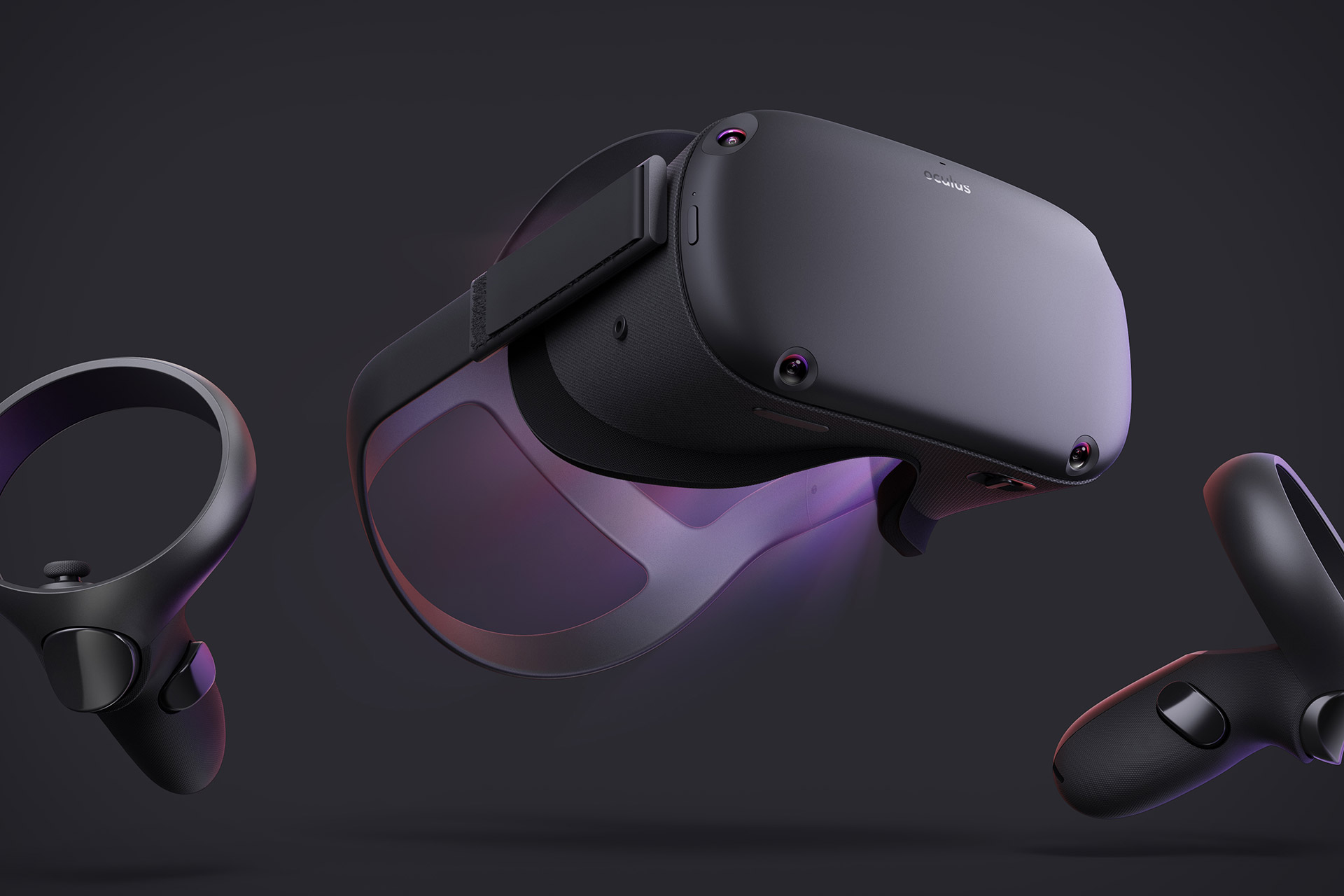Latest VR/AR/MR hardware I think are great:
VR
- Oculus Quest, Rift
- HTC Vive
- Samsung HMD Odyssey
AR
- North Focals
MR
- nReal Light
- Microsoft HoloLens
Favourite VR device: Oculus Quest

The long awaited Santa Cruz project has culminated in the Oculus Quest, Oculus’ latest offering combining Rift-quality graphics and degree-of-freedom with Go-level mobility. These six degrees of freedom mean that users can move around in virtual reality by walking around in the real world. The lack of a connecting cable from the headset to computer also allows for greater freedom of movement compared to the Rift and reduces immersion-breaking moments like getting tangled up in your own cables! Another major advantage is not requiring a huge investment in a high-end PC to use it (like the Rift and HTC Vive do), lowering the barrier of entry to VR.
4 cameras on the front of the headset not only keep track of the controllers and environment, but also open up the possibility of mixed reality, as the company showed during Oculus Connect 5. These cameras are also key to the Guardian system, which keeps users safe by warning them if they are on the verge of bumping into a wall.
One disadvantage of having all the hardware in the device is that upgrading would be nigh impossible, compared to being able to “upgrade” the Rift by upgrading the PC it’s connected to.
Despite this disadvantage, the Oculus Quest strikes a good balance between raw power and mobility, and is therefore my favourite VR device at the moment.
Image Credit: https://uncrate.com/oculus-quest-vr-headset/
Favourite MR device: nReal Light

I picked the nReal Light over the Microsoft HoloLens and Magic Leap One as my favourite becuase it is the most lightweight and affordable of the three.
From early reviews, it appears to be no slouch, outputting 1080 video and sporting a 52 degree FOV and 6 DOF. Its appeal, however, lies in its ordinary looks. You could arguably pass it off as a pair of sunglasses. In fact, this was one of the reasons for its creation by a former Magic Leap engineer who disagreed with the company’s outlandish design.
Another major advantage is that it weighs less than a third and costs less than half of the Magic Leap One, its closest competitor, making it more accessible to the mass market. While it comes with the standard processing unit and controller, it also intentionally connects via USB-C. The plan is for the glasses to eventually be able to act as an output device for mobile AR content, giving it another advantage over the Magic Leap One and HoloLens, which are coupled with their proprietary processing units.
Image Credit: https://www.digitaltrends.com/wearables/nreal-product-impressions-ces-2019/
